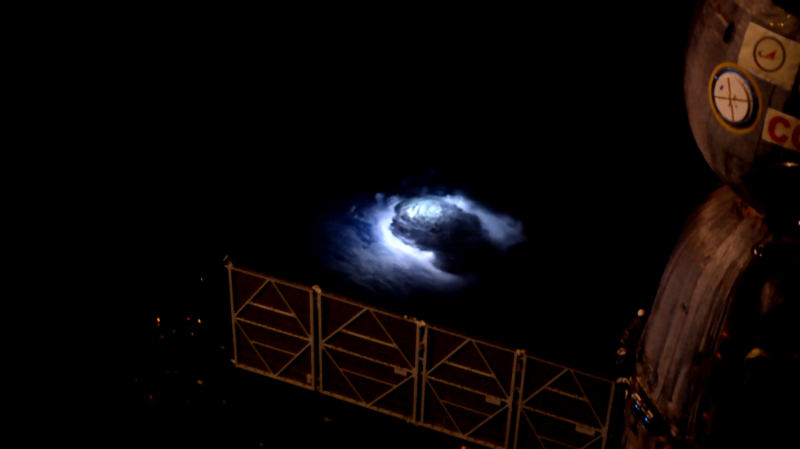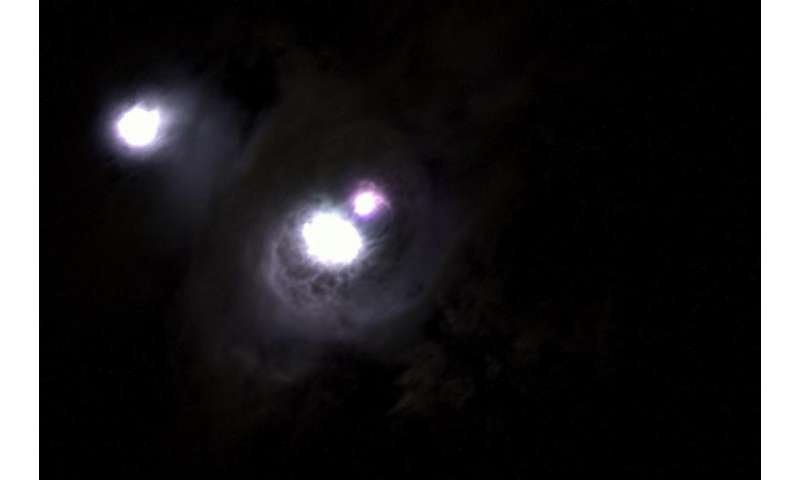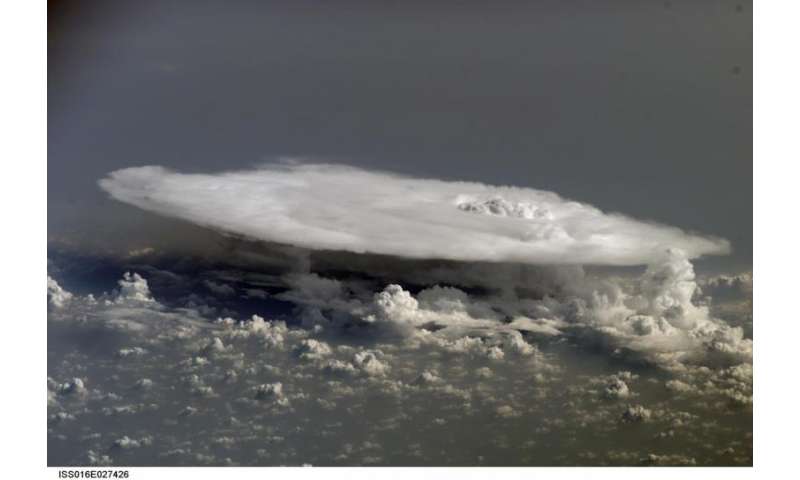Blue jets studied from ISS

For years, their existence has been debated: elusive electrical discharges in the upper atmosphere that sport names such as red sprites, blue jets, pixies and elves. Reported by pilots, they are difficult to study as they occur above thunderstorms.
ESA astronaut Andreas Mogensen during his mission on the International Space Station in 2015 was asked to take pictures over thunderstorms with the most sensitive camera on the orbiting outpost to look for these brief features.
Denmark's National Space Institute has now published the results, confirming many kilometre-wide blue flashes around 18 km altitude, including a pulsating blue jet reaching 40 km. A video recorded by Andreas as he flew over the Bay of Bengal at 28 800 km/h on the Station shows the electrical phenomena clearly – a first of its kind.
Satellites had probed these events but their viewing angle is not ideal for gathering data on the scale of the blue jets and smaller blue discharges. In contrast, the Station's lower orbit is ideally placed to capture the sprites and jets.
Andreas aimed for cloud turrets – cloud pillars extending into the upper atmosphere – and shot a 160 second video showing 245 blue flashes from the top of a turret that drifted from the Bay of Bengal's thunderstorm.
The blue discharges and jets are examples of a little-understood part of our atmosphere. Electrical storms reach into the stratosphere and have implications for how our atmosphere protects us from radiation.
Permanent observation
This experiment confirms that the Space Station is a suitable base for observing these phenomena. As a follow-up, the Atmosphere–Space Interactions Monitor is being prepared for launch later this year for installation outside Europe's Columbus laboratory to monitor thunderstorms continuously to gather information about such 'transient luminous events'.
Andreas concludes, "It is not every day that you get to capture a new weather phenomenon on film, so I am very pleased with the result – but even more so that researchers will be able to investigate these intriguing thunderstorms in more detail soon."
-

The image shows lightning strikes illuminating clouds over Western Australia during a thunderstorm. The Space Station travels at 28 800 km/h so it takes only 90 minutes to complete an orbit of Earth. Astronauts often spot thunderstorms and are impressed by how much lightning they observe. Credit: ESA/NASA -

A cumulonimbus cloud over Africa photographed by an astronaut on the International Space Station. Deemed by many meteorologists as one of the most impressive of cloud formations, cumulonimbus (from the Latin for ‘puffy’ and ‘dark’) clouds form owing to vigorous convection of warm and moist unstable air. Air warmed by the ground rises, with water droplets condensing as the rising air encounters cooler air at higher altitudes. The air mass itself also expands and cools as it rises owing to decreasing atmospheric pressure. This type of convection is common in tropical latitudes. As water in the rising air mass condenses and changes from a gaseous to a liquid state, it releases energy, further heating the air and leading to more convection and rising of the clouds to higher altitudes, producing the characteristic vertical towers associated with cumulonimbus clouds. If enough moisture is present to condense and continue heating the cloud mass through several convective cycles, a tower can rise to altitudes up to 20 km. Credit: NASA
More information: Olivier Chanrion et al. Profuse activity of blue electrical discharges at the tops of thunderstorms, Geophysical Research Letters (2017). DOI: 10.1002/2016GL071311
Journal information: Geophysical Research Letters
Provided by European Space Agency




















